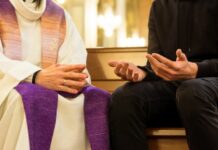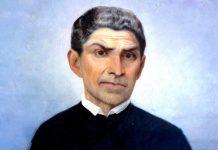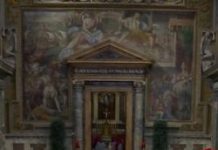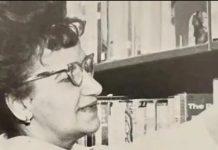
Papal conclaves are traditionally held in Rome, specifically in the Sistine Chapel within the Vatican. However here are some cases in history where this has not been so.
Newsroom (07/05/2025 09:42, Gaudium Press) However, there have been a few instances in history where conclaves took place outside of Rome, often due to political instability, conflicts, or the absence of the papacy from the city. These conclaves are rare and historically significant. Below is a list of notable papal conclaves held outside Rome:
—
1. Conclave of 1268–1271 (Viterbo, Italy)
Viterbo, a city north of Rome.
Following the death of Pope Clement IV, this conclave was the longest papal election in the history of the Catholic Church.This was due primarily to political infighting between the cardinals. The election of Teobaldo Visconti as Pope Gregory X was the first example of a papal election by “compromise”, that is, by the appointment of a committee of six cardinals agreed to by the other remaining ten (this method was attempted once before, in the 1227 papal election, but the choice of the committee refused the honor and the full group of cardinals proceeded to elect the pope). The election occurred more than a year after the magistrates of Viterbo locked the cardinals in, reduced their rations to bread and water, and removed the roof of the Palazzo dei Papi di Viterbo where the election took place.
This conclave led to the establishment of stricter rules for future conclaves, including the requirement that cardinals be secluded during the election process.
—
2. Conclave of 1241 (Rome, but not in the Vatican)
The Septizodium, an ancient Roman monument in Rome.
The election took place during the first of many protracted sede vacantes of the Middle Ages, and like many of them was characterized by disputes between popes and the Holy Roman Emperor. In this case, the election took place during the war between Frederick II, Holy Roman Emperor and the Lombard League and deceased pontiff, Pope Gregory IX, with Italy divided between pro-Papal and pro-Imperial factions known as the Guelphs and Ghibellines.
During the sede vacante, Frederick II surrounded Rome with his armies, blocking the arrival of some cardinal electors known to be hostile to his interests. Unable to reach a consensus, the cardinals were locked in a Septizodium by the Roman civic officials, eventually settling on one of their oldest and most feeble members. The conditions within the building were believed to have contributed to the death of one of the papabile and even to the death of Celestine IV soon after the election
The cardinals were held under harsh conditions, and the election resulted in the choice of Pope Celestine IV, who died just 17 days after his election.
—
3. Conclave of 1314–1316 (Lyon, France)
Location: Lyon, France.
The papal conclave held from 1 May 1314 to 7 August 1316 in the apostolic palace of Carpentras and then the Dominican house in Lyon was one of the longest conclaves in the history of the Roman Catholic Church and the first conclave of the Avignon Papacy. The length of the conclave was due to the division of the cardinals into three factions: Italian (Orsini, Alberti, Stefaneschi, Caetani, Longhi, Fieschi, and both Colonna), Gascon (de Pellegrue, de Fougères, Nouvel, Teste, de Farges, de Garve, Daux, du Four, Raymond, and Godin), and French/Provençal (both Fredol, de Bec, Caignet de Fréauville, de Mandagot, and d’Euse).
The Italian faction wished to return the papacy to Rome, the Gascon faction—mostly composed of the relatives of the previous pope, Clement V, wished to retain the privileges and powers they had enjoyed during his rule, and the French/Provençal opposed these aims of the Italian and Gascon factions
This conclave was part of the broader Avignon Papacy, which lasted from 1309 to 1377 and saw the papacy heavily influenced by French monarchs.
—
4. Conclave of 1417 (Constance, Germany)
Location: Constance (now Konstanz, Germany).
The Council of Constance (Latin: Concilium Constantiense;) was an ecumenical council of the Catholic Church that was held from 1414 to 1418 in the Bishopric of Constance (Konstanz) in present-day Germany. This was the first time that an ecumenical council was convened in the Holy Roman Empire. The council ended the Western Schism by deposing or accepting the resignation of the remaining papal claimants and by electing Pope Martin V. It was the last papal election to take place outside of Italy.
The council is also important for its role in the debates over ecclesial conciliarism and papal supremacy. Constance issued two particularly significant decrees regarding the constitution of the Catholic Church: Haec sancta (1415), which asserted the superiority of ecumenical councils over popes in at least certain situations, and Frequens (1417), which provided for councils to be held automatically every ten years.
The council also condemned Jan Hus as a heretic and facilitated his execution.
—
5.Conclave of 1799–1800 (Venice, Italy)
Location: The Benedictine Monastery of San Giorgio Maggiore, Venice.
This conclave took place during the Napoleonic Wars, a period of widespread conflict across Europe. The previous pope, Pius VI, had died in captivity in France, and the Church was under significant pressure from Napoleon Bonaparte. With the loss of the Vatican and the pope’s other temporal power, the cardinals were left in a remarkable position. All had been expelled from the city of Rome by the French occupying authorities. They were forced to hold the conclave in Venice. This followed an ordinance issued by Pius VI in 1798, which established that when a conclave could not be held in Rome it would be held in the city with the greatest number of cardinals.
The Benedictine San Giorgio Monastery in Venice was chosen as the location for the conclave, and the voting would be held in its night chapel. The city, along with other northern Italian lands, was held by the Archduchy of Austria, whose ruler Francis II, Holy Roman Emperor, agreed to defray the costs of the conclave.
This conclave was held in Venice and was the last to take place outside Rome.
Cardinal Barnaba Chiaramonti was elected as Pope Pius VII. His papacy was marked by a tumultuous relationship with Napoleon, including periods of cooperation and conflict. Pius VII later negotiated the Concordat of 1801 with Napoleon, restoring the Church’s presence in France.
—
6. Conclave of 1830–1831 (Rome, but not in the Vatican)
Location: The Quirinal Palace, Rome.
The papal conclave lasting from 14 December 1830 to 2 February 1831 resulted in the election of Bartolomeo Cappellari, who took the name Gregory XVI, to succeed Pius VIII as pope.
On December 11, the Governor of Rome, Msgr. Benedetto Cappelletti, informed the cardinals that there was a conspiracy in Rome involving the Bonaparte nephews of Cardinal Joseph Fesch. One in custody had been released to the Russian minister, since his mother was the Russian-born Catharina of Württemberg. Fesch refused to ask his nephews to leave Rome. A bomb exploded under the windows of the conclave. The conclave opened in an atmosphere of high tension.
No conclave since then has lasted as long as a week. The conclave took eighty-three ballots to deliver a two-thirds majority to a candidate, whereas no conclave since has taken more than fourteen.
Cappellari, then a Camaldolese priest and prefect of the Congregatio de Propaganda Fide, was also the last Pope not a bishop when elected
His election to the position of Pope was made possible due to a deadlock between two other leading candidates. Because Cappellari had been the abbot of the Monastery of San Gregorio, he chose the regnal name Gregory XVI
Conclusion:
Papal conclaves outside Rome are rare and typically occur under extraordinary circumstances, such as political instability, war, or the displacement of the papacy. These conclaves often reflect the broader challenges faced by the Church at the time, including external pressures, internal divisions, and the need to adapt to changing geopolitical realities. Despite their unusual locations, these conclaves have played crucial roles in shaping the history of the Catholic Church.
- Raju Hasmukh

































